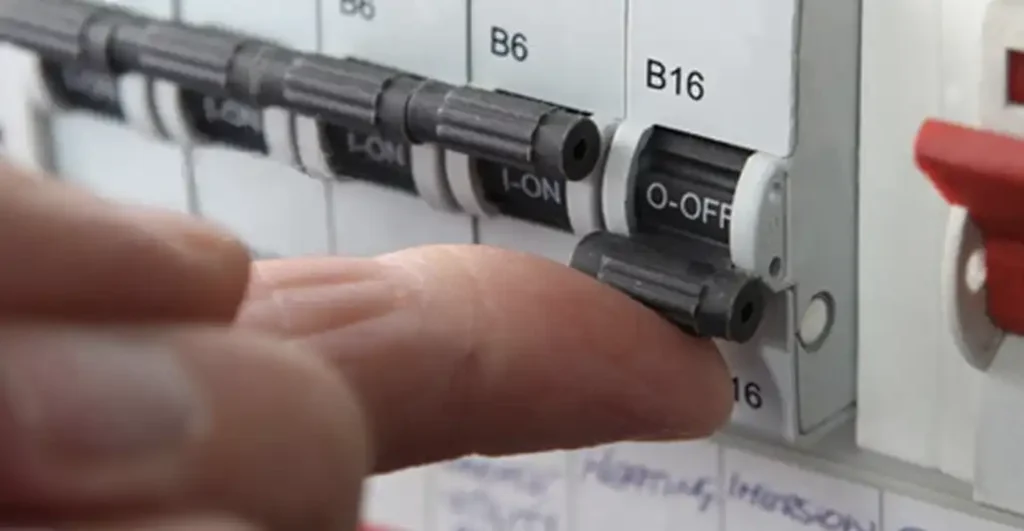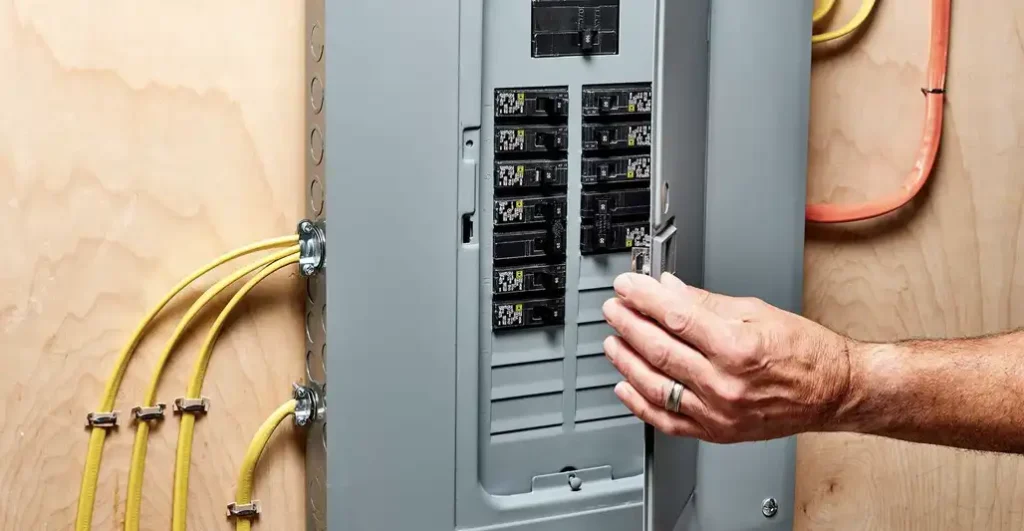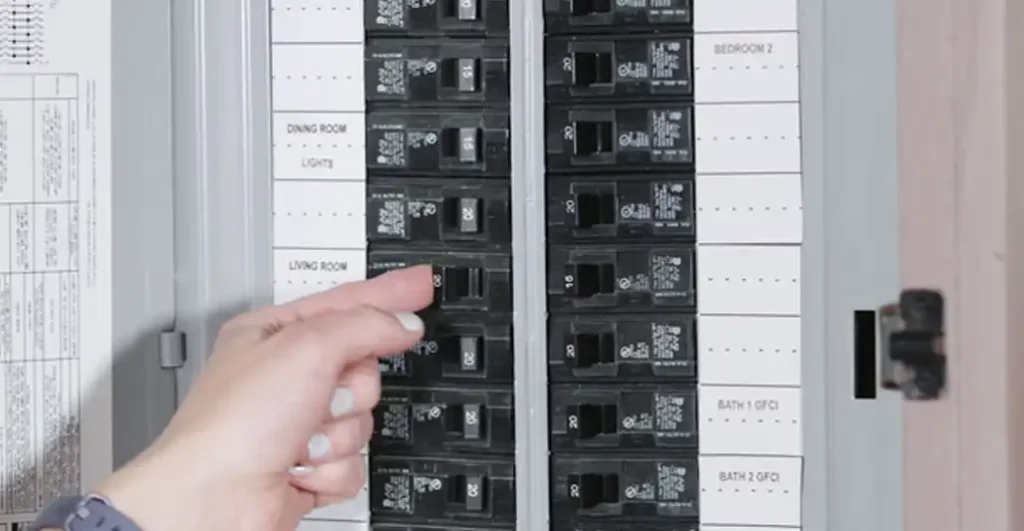In this article, we will explore the essential steps on how to reset a circuit breaker. Whether you’re experiencing a sudden power outage or need to troubleshoot electrical issues, knowing how to reset a circuit breaker is a valuable skill.
We’ll discuss the importance of safety precautions and provide a step-by-step guide to help you reset your circuit breaker safely and efficiently.
Why Resetting a Circuit Breaker is Important
Before delving into the technicalities, let’s understand why resetting a circuit breaker is crucial. Circuit breakers are designed to protect electrical circuits from damage caused by overload or short circuit conditions.
When a circuit is overloaded or a short circuit occurs, the circuit breaker trips, cutting off the flow of electricity to prevent overheating and potential fires. Resetting the circuit breaker restores power to the affected circuit, ensuring the safe operation of electrical devices and appliances.
Why Won’t My Circuit Breaker Reset

If you’re experiencing difficulty resetting your circuit breaker, several factors could be at play:
Overload: If the circuit remains overloaded or if there’s a persistent fault, the breaker may refuse to reset to prevent further damage. In such cases, it’s crucial to identify and address the underlying issue before attempting to reset the breaker.
Short Circuit: A short circuit can cause significant damage to electrical circuits and may prevent the breaker from resetting. Inspect the affected circuit for signs of a short circuit, such as burnt wires or a strong burning odor. If a short circuit is detected, it’s essential to rectify the issue before resetting the breaker.
Mechanical Failure: Circuit breakers can experience mechanical failure over time, leading to difficulties in resetting. If the breaker feels loose or does not engage properly when attempting to reset, it may be due to internal mechanical issues. In such cases, it’s advisable to seek professional assistance to assess and replace the faulty breaker.
Tripped GFCI or AFCI: In some cases, the circuit breaker may be part of a Ground Fault Circuit Interrupter (GFCI) or an Arc Fault Circuit Interrupter (AFCI) system. These specialized breakers are designed to trip in response to specific electrical faults, and resetting them may require additional steps, such as pressing a reset button located on the breaker itself.
Electrical System Faults: If the circuit breaker repeatedly refuses to reset despite troubleshooting efforts, it may indicate underlying faults within the electrical system, such as wiring issues or faulty appliances. In such instances, it’s crucial to enlist the services of a qualified electrician to conduct a thorough inspection and identify the root cause of the problem.
A circuit breaker may fail to reset due to various factors, including overload, short circuits, mechanical failure, or faults within the electrical system. It’s essential to diagnose the underlying issue accurately and take appropriate measures to ensure the safe and effective operation of the electrical circuits. If uncertain or unable to resolve the problem, seeking professional assistance is always recommended.
How to Reset Circuit Breaker

Resetting a circuit breaker is a simple process that can help restore power to your electrical circuits. Follow these detailed steps to reset a circuit breaker safely:
Turn Off Appliances: Before resetting the circuit breaker, it’s crucial to turn off all appliances and devices connected to the affected circuit. This step prevents potential damage to your electrical devices and reduces the risk of electrical hazards.
Locate the Electrical Panel: The electrical panel, also known as the circuit breaker box, is typically located in the basement, garage, or utility room of your home. It contains multiple circuit breakers, each labeled for specific areas or appliances.
Safety Precaution: Ensure your hands and the surrounding area are dry before accessing the electrical panel to minimize the risk of electric shock.
Identify the Tripped Breaker: Inspect the circuit breakers in the electrical panel to identify the one that has tripped. A tripped breaker is usually in the “off” or middle position, indicating that it has been triggered due to overload or a short circuit.
Visual Inspection: Look for any breakers that are not aligned with the others or have a position indicator in the middle, signaling a tripped state.
Reset the Breaker: To reset the tripped circuit breaker, follow these steps:a. Switch Off Position: Firmly push the tripped breaker switch to the “off” position. You may need to apply moderate pressure to move the switch.b.
- Reset Position: Once the breaker is in the “off” position, push it firmly to the “on” position. You should feel a slight resistance as the breaker engages.c.
- Check for Reset: Ensure the breaker stays in the “on” position after resetting. If it trips again immediately or shortly after resetting, there may be an underlying issue that requires further investigation.
Test the Circuit: After resetting the circuit breaker, test the affected outlets or appliances to confirm that power has been restored. Plug in a small electrical device or turn on a light to verify functionality.
Monitor for Recurring Issues: Keep an eye on the circuit to ensure it remains stable and does not trip repeatedly. If the circuit breaker continues to trip or if you notice any signs of electrical problems, such as sparks or burning odors, refrain from using the affected outlets and consult a qualified electrician for further assistance.
By following these steps, you can safely reset a circuit breaker and restore power to your electrical circuits, ensuring the uninterrupted operation of your home appliances and devices. Remember to prioritize safety and seek professional help if you encounter any difficulties or recurring issues with your electrical system.
How Can a Circuit Breaker Be Reset Manually or Automatically

Circuit breakers can be reset either manually or automatically, depending on their type and function. Here’s an explanation of both methods:
Manual Reset:
- Identify the Tripped Breaker: In manual reset circuit breakers, such as those commonly found in residential and commercial buildings, the breaker must be manually reset after it has tripped. Tripped breakers are typically identified by a position indicator in the middle or “off” position.
- Access the Electrical Panel: Locate the electrical panel or circuit breaker box in your home or building. This panel contains multiple circuit breakers, each controlling a specific electrical circuit.
- Reset the Breaker Manually:
- Switch Off Position: Firmly push the tripped breaker switch to the “off” position. You may need to apply moderate pressure to move the switch.
- Reset Position: Once the breaker is in the “off” position, push it firmly to the “on” position. You should feel a slight resistance as the breaker engages.
- Verify Reset: Ensure the breaker remains in the “on” position after resetting. Test the affected outlets or appliances to confirm that power has been restored.
Automatic Reset:
- Identify the Automatic Reset Breaker: Automatic reset circuit breakers are commonly used in automotive, marine, and industrial applications. These breakers are designed to automatically reset after a brief delay once the fault condition has been cleared.
- Wait for Automatic Reset: When an overcurrent or fault condition occurs, automatic reset breakers trip and disconnect the circuit. After a predetermined time delay, typically a few seconds to a few minutes, the breaker automatically resets itself and restores power to the circuit.
- Monitor for Recurring Trips: While automatic reset breakers offer convenience by automatically restoring power, it’s essential to monitor the circuit for recurring trips. If the breaker continues to trip repeatedly, it may indicate an underlying issue that requires further investigation and corrective action.
Whether manually or automatically reset, circuit breakers play a critical role in protecting electrical circuits and devices from damage due to overload or short circuit conditions. Understanding how to reset circuit breakers safely and effectively is essential for maintaining a safe and reliable electrical system.
Manual vs. Automatic Circuit Breaker Reset Comparison:
| Feature | Manual Reset | Automatic Reset |
|---|---|---|
| Reset Process | Requires manual intervention to reset | Resets automatically after a time delay |
| Control | User-controlled | Self-controlled |
| Typical Application | Residential and commercial buildings | Automotive, marine, and industrial settings |
| Intervention Needed | Yes | No (except for monitoring and troubleshooting) |
By comparing manual and automatic circuit breaker resets in a table format, we can easily understand the differences between the two methods.
Conclusion
In conclusion, knowing how to reset a circuit breaker is a valuable skill that can help you maintain a safe and functional electrical system. By understanding the causes of circuit breaker tripping and following proper procedures for resetting breakers, you can ensure the uninterrupted flow of electricity in your home or building.